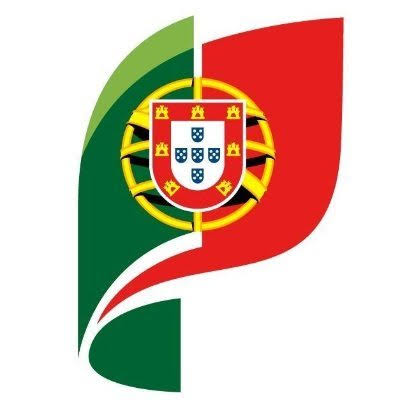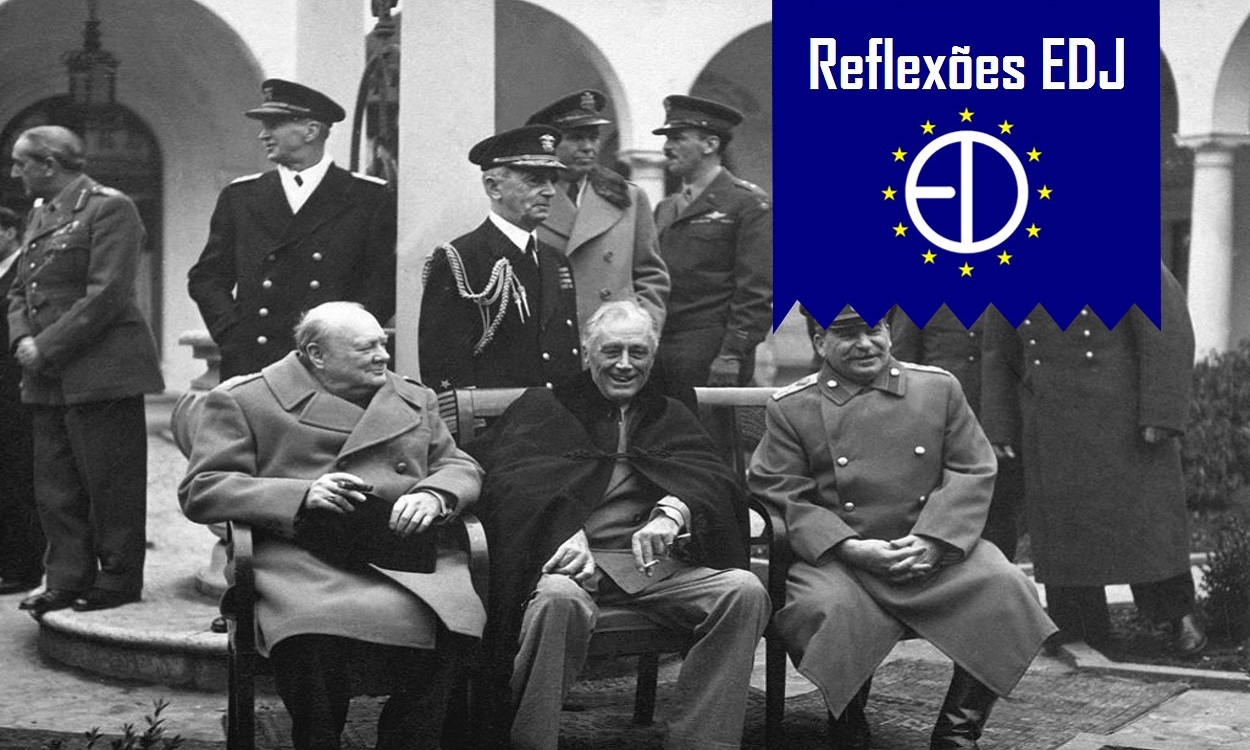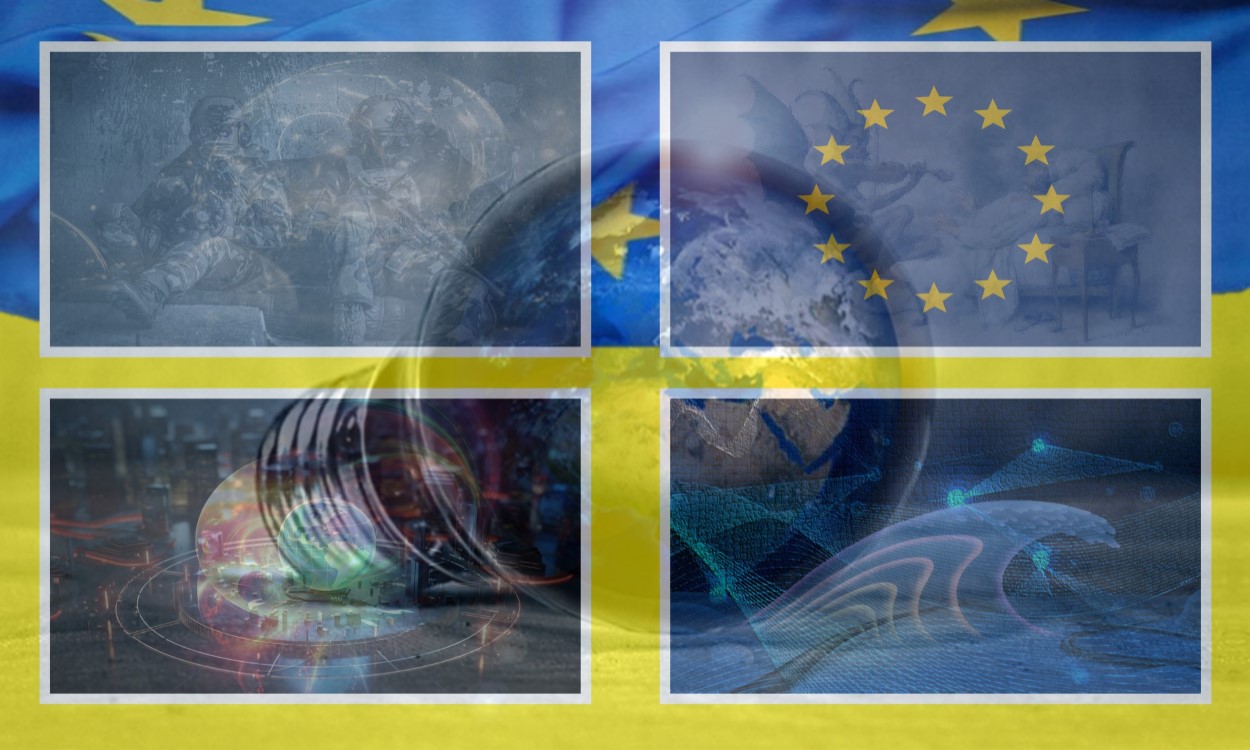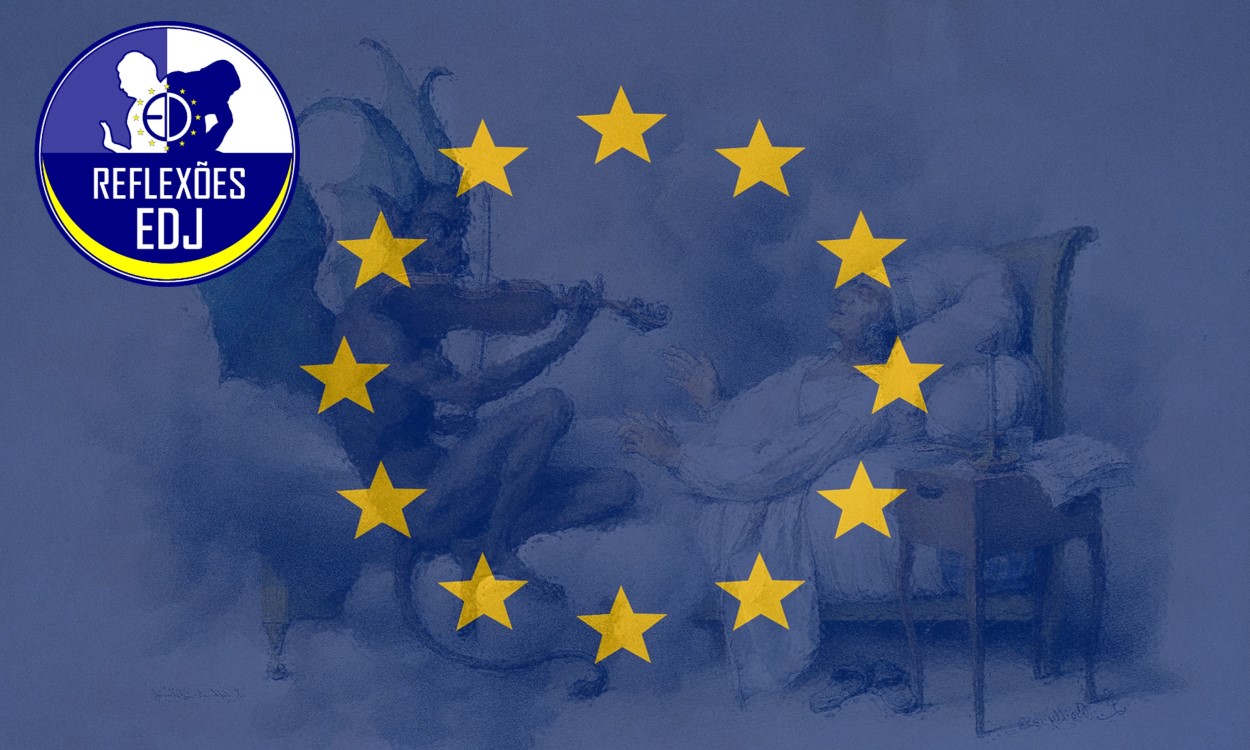Major challenges and their flash point
Looking back to NATO’s foundation in 1949, the “fathers” of this organization had a clear purpose in mind: “Keep the Soviet Union out, the Americans in, and the Germans down”[1]. This can be explained by the fact that this military alliance was formed under the goal of rebuilding Europe from the ruins of World War II and acting as a deterrent against the Soviet attack.
Right after the fall of the Berlin Wall, in 1990, the President Mikhail Gorbachev advocated that the Soviet Union join NATO, while, at the same time, was arranging the German reunification with the US Secretary of State James Baker. This proposal was dismissed by Baker, although it has since been proposed countless times. The truth is that giving Russia membership would have necessitated a radical rethinking of this military alliance.
Nonetheless, NATO has had to establish a new raison d’être in the three decades since the end of the Cold War and the collapse of the Soviet Union, and for this reason began to rethink its mission. The new objective, according to a former Montenegrin ambassador to NATO, was to ensure the democratization of freshly post-communist nations, which the alliance saw as critical to guaranteeing a stable Europe – since, after joining NATO, most of the countries joined the European Union.
In 1991, the relations between NATO and the Russian Federation became possible and were established under the framework of the North Atlantic Cooperation Council. The military alliance has attempted to develop a partnership and seek communication with Russia, especially through the NATO-Russia Council in 2002, a platform for consultation on security matters and cooperation, as well as a consensus building and joint-decision making.
Later in 1994, Russia also joined the Partnership for Peace, a program focused on increasing confidence between NATO and other European and post-Soviet states, described by President Clinton as a track that could lead to NATO membership. Additionally, through the early 2000s, NATO and Russia signed several additional agreements on cooperation, such as the NATO-Russia Founding Act. This treaty resulted in the establishment of political and military channels of communication on the basis of reciprocity and further mutual arrangements. It is also imperative to mention that in 1998 Russia established a diplomatic mission to NATO, and later in 2001/2002 NATO opened an Information Office and a Military Liaison Mission in Moscow.
This cooperation between NATO and Russia was developed within the context of their common interests, in a couple of significant sectors: combating terrorism through military cooperation, Afghanistan cooperation (including transportation of non-military International Security Assistance Force freight by Russia, and fighting local drug production), industrial cooperation, and weapons non-proliferation are a few examples.
However, as is well-known, since the end of the cold war, out of the thirteen countries that have joined NATO, Russia was not included.
Why isn’t Russia a member of NATO?Despite Russia’s desire to join NATO, there has also been a lot of animosity between them. As the former Danish Prime Minister, Anders Fogh Rasmussen, who served as NATO Secretary General from 2009 to 2014, said “Once Russia can demonstrate that it respects democracy and human rights, NATO may seriously contemplate Russia joining“. At the same time, Russia has constantly made a request that NATO has denied: refusing to accept new members in its surrounding countries, and “Neither the West nor Moscow had the authority to decide whether or not such countries should join NATO”, according to the former NATO ambassador Garcevic.
By 1999, the alliance turned into a security challenge for the Kremlin, when it became evident that NATO and Russia had incompatible points of view about the future of the post-Soviet countries – a critical turning point in which Russia began to become more anti-Western. As time passed, a growing sense of nostalgia for the Soviet Union emerged, and Russia’s behavior made it apparent, showing that they were looking at NATO as a foe.
The flash point began in April 2008, at the Bucharest meeting, when NATO promised Georgia and Ukraine membership, although no membership strategy was presented. As a result, Russia invaded Georgia for five days in August at the same year, in an ostensibly way to safeguard the breakaway republics of South Ossetia and Abkhazia. This Russian military action led the NATO-Russia Council to postpone formal meeting and cooperation in several areas, and the allies continued to press Russia to rescind its recognition of Abkhazia and South Ossetia as separate nations in Georgia.
Upon these actions we can admit that Vladimir Putin took NATO steps as a lack of resolve and willingness to act if he put that resolve to the test – and he continued to put it to the test. He sent Russian soldiers to take Crimea from Ukraine in 2014, instigating the country’s ongoing conflict in the east. As stated by Sergei Karaganov, a former Kremlin counselor, history may have turned out differently. He also declared that allowing Russia to join NATO was one of the biggest political blunders in history that put Russia and the West on a collision track, sacrificing Ukraine in the process. Since this moment, Russia and NATO’s relations have reverted back to their Cold War hostility, and the military alliance agreed to cease all practical cooperation with the Russian Federation.
Simultaneously, NATO’s concerns are far broader than Russia’s actions in Ukraine. The Allies continue to express their support for Georgia’s and Moldova’s territorial integrity within their internationally recognized boundaries, and they demand that Russia withdraw its forces stationed in all three countries without their agreement. Not to mention that Russia’s military activities have increased, particularly along NATO’s borders, and its actions continue to make the Euro-Atlantic security environment less stable and predictable – especially its practice of calling snap exercises, deploying near NATO borders, conducting large-scale training and exercises, and violating allied airspace. Besides, Russian hybrid operations, such as attempted intervention in election processes and nation-state sovereignty, broad disinformation campaigns, and hostile cyber activities, represent a threat to Euro-Atlantic security and stability.
In the meantime, we should also denote Russia’s military engagement and presence in Syria that have increased the Alliance’s risks. In reaction to this military participation in Syria, the allies demanded that Russia cease its assaults on Syrian opposition and civilians immediately, refocus its efforts on combating the so-called Islamic State, and encourage a diplomatic settlement to the war.
In this framework, Russia’s continuous violations, non-implementation, and circumvention of numerous duties and obligations in the realms of weapons control and confidence building measures have exacerbated allies’ concerns about Russia’s selective implementation of the Vienna Convention, and its long-standing non-application of the Conventional Forces in Europe Treaty – both of which pose a threat to European security, and have repeatedly urged Russia to return to full compliance with the Open Skies Treaty’s commitments.
Also, following the Russia’s violation of the Intermediate-Range Nuclear Forces (INF) Treaty’s prohibition on possessing, producing, or fight-testing a ground-launched cruise missile with a range capability of 500 to 5500 kilometers, as well as possessing or producing launchers for such missiles, the United States suspended its commitments under the INF Treaty and demanded that Russia return to full and verifiable compliance immediately. The fact is that Russia had produced and deployed a missile system that infringed the Treaty and posed substantial dangers to Euro-Atlantic security.
Anyhow, Russia has continued to deny violating the INF Treaty, has refused to provide any meaningful answer, and has taken no concrete steps toward returning to full and verifiable compliance. So, the United States chose to withdraw from the Treaty and defined that it was going to respond to Russia’s serious threats in a calm and reasonable manner, while, at the same time, the allies are concerned about maintaining effective international arms control, disarmament, and non-proliferation.
More recently, in October 2021, Russia has decided to put its diplomatic mission to NATO on hold, and the alliance has agreed to close the NATO Information Office and the Military Liaison Mission in Moscow. In reaction to Russia’s hostile activities, the Alliance has enhanced its deterrence and defense capabilities while maintaining open to talks, including through the NATO-Russia Council.
At this time, we can assume that the major problem is that the threat Russia represents today is far more complex and has shifted from a predictable and bipolar clash to a multilayered, opaque picture of threats and obstacles. Moreover, Russia has turned into a geopolitical “spoiler”, attempting to destroy democratic society’s trust, confidence, and stability.
Concluding, we can say in a convincing tone that tensions between Russia and the North Atlantic Treaty Organization have reached the point of crisis. On one hand, we have the Russians claiming that the US and NATO have repeatedly broken promises made in the early 1990s that the alliance would not expand into the former Soviet Union. On the other hand, NATO declares that Russia has shattered the confidence of the heart of their partnership and questioned the global and Euro-Atlantic security architecture’s fundamental assumptions. In this context, we take that there is no way Moscow could join NATO today, and simultaneously Russia has no interest in joining an organization that it perceives as a danger.
Nevertheless, NATO’s allies are convinced that a strategic relationship between NATO and Russia, based on international law, would be beneficial. They continue to struggle for a cooperative and constructive affiliation with Russia based on shared security concerns and interests, including reciprocal confidence-building, as well as increased mutual understanding of NATO and Russia’s non-strategic nuclear force postures in Europe. They regret that the circumstances for a partnership do not exist at this time, and they reaffirm that ‘business as usual’ will not resume until Russia proves conformity with international law and its international commitments and responsibilities.
Finally, for those who still have doubts about NATO’s effectiveness, there has never been a time when NATO was more necessary and collective security was more crucial. Since 2014, the alliance has placed “readiness” at the top of its priority list, resulting in security reinforcements on the alliance’s eastern flank. At the same time, NATO has a very important everlasting mission in preserving democracy and human rights.
19 de abril de 2022
Inês Silva
EuroDefense-Jovem Portugal
Bibliography
[1] Stated by NATO’s first Secretary General, Lord Hastings Lionel Ismay.
Roache, M. (2019). Breaking Down the Complicated Relationship Between Russia and NATO. Retrieved 26 March 2022, from https://time.com/5564207/russia-nato-relationship/
Russia–NATO relations – Wikipedia. Retrieved 26 March 2022, from https://en.wikipedia.org/wiki/Russia%E2%80%93NATO_relations
NATO-Russia relations: the facts. (2022). Retrieved 26 March 2022, from https://www.nato.int/cps/en/natohq/topics_111767.htm
Relations with Russia. (2022). Retrieved 26 March 2022, from https://www.nato.int/cps/en/natohq/topics_50090.htm
Masters, J. (2022). Why NATO Has Become a Flash Point with Russia in Ukraine. Retrieved 26 March 2022, from https://www.cfr.org/backgrounder/why-nato-has-become-flash-point-russia-ukraine
NOTA:
- As opiniões livremente expressas nas publicações da EuroDefense-Portugal vinculam apenas os seus autores, não podendo ser vistas como refletindo uma posição oficial do Centro de Estudos EuroDefense-Portugal.
- Os elementos de audiovisual são meramente ilustrativos, podendo não existir ligação direta com o texto.








